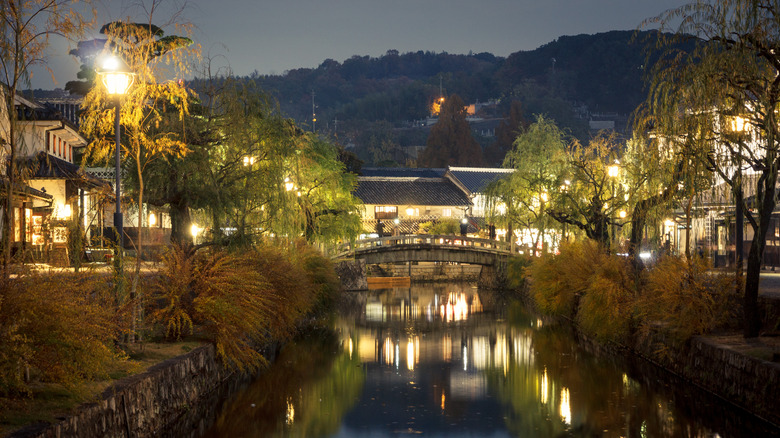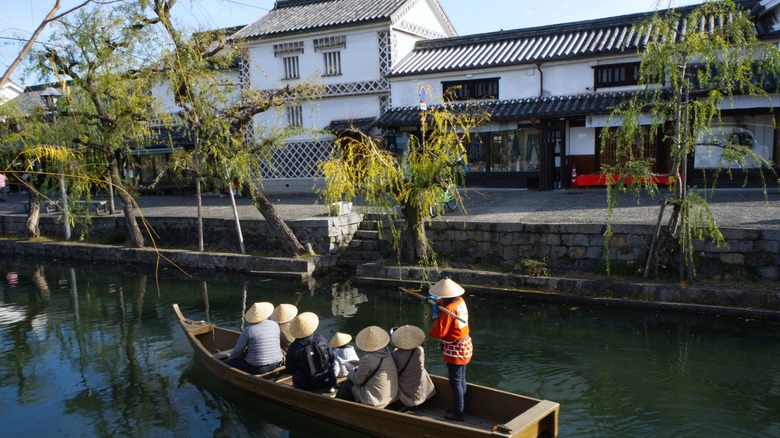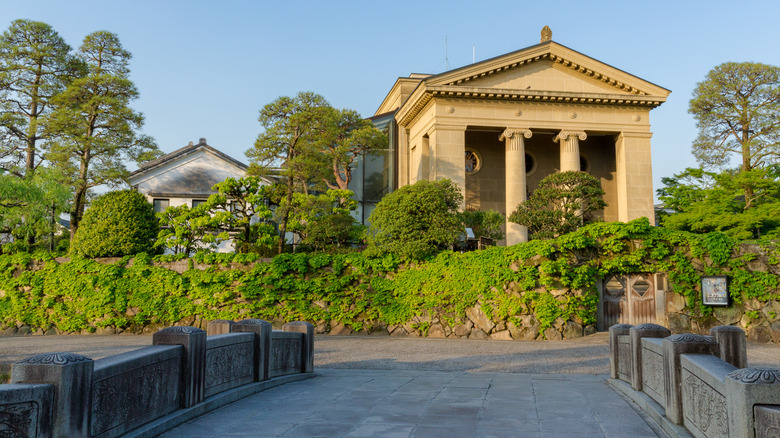The Breathtaking And Under-The-Radar Canal City Often Called The 'Venice Of Japan'
A trip to Japan has its fair share of must-see destinations. From the neon lights of Tokyo, the temples and shrines of Kyoto, and the awe-inspiring beauty of Mt. Fuji, it's no surprise that Japan drew over 25 million visitors in 2023. However, if you're going to Japan soon, there's a little-discussed city that should be on everyone's itinerary, from the first-time visitor to the seasoned explorer, and that's Kurashiki.
Once a prominent center for rice distribution, Kurashiki is located in Western Japan, in the Okayama Prefecture, and is considered one of the most picturesque cities in Japan. This is probably due to two reasons: for one, the Bikan historical district, with its old wooden houses, looks much like it did a couple of centuries ago and its lovely canal, teeming with swans and local guides, has earned it the nickname of the "Venice of Japan." The city is also notable for being home to a number of museums, including the Ohara Museum, which has works by the likes of Picasso and Pollock on display.
Next time you're in Japan, make sure to take a day (or two) to visit Kurashiki. A city like this, which is also home to several museums and gardens, is a wonderful place to walk around, think, and find some peace and quiet.
More whimsical than Venice
At the lower end of the Takahashi River lies the little-known but beautiful Kurashiki. Kurashiki has been put on the map thanks to TikTok videos featuring a whimsical Fukoka Yanagawa River cruise. In the video, a playful boat driver signals for the riders to duck under low-level bridges while he jumps from the bridge onto the riverboat and even sings to the riders. This boat tour is the perfect example of Japanese charm and is a delightful way to discover the Kurashiki Bikan historical quarter, with its beautiful canals, lined with willow trees. While some will want to describe Kurashiki as the "Venice of Japan," it has a strong character that sets it apart from anything you'll find in Europe.
From the 17th to the 19th century during the Edo period in Japan, Kurashiki was an important node for trade as an abundance of rice, cotton, and oil came through the city. A fun fact that'll make any history buff jump for joy is that many of the houses used to store these goods still remain intact, and can be seen walking through the historical quarter.
A hub of folklore and classical art
Beyond the canals, you'll find more charm at the picturesque Ivy Square, where the first modern cotton mill in Japan was implemented. Although the Ivy that now covers the bricks could imply this building is no longer in use, the mill is still active today, and the grounds include a restaurant and hotel. In the vicinity, you'll also find a piggybank museum, which hosts a charming collection of piggybanks that were made in Japan.
Another notable pit stop in Kurashiki is the Momotaro Karakuri Museum. This small, niche museum revolves around the popular regional Japanese folktale of Momotaro, or "Peach Boy", whose adventures included battling ogres. Make sure to try Kibi Dango while you're in the area, a type of dumpling from the Okayama prefecture that features prominently in the legend of Momotaro.
Another absolute must-see if you're in the area is the Ohara Museum of Art. Established in 1930, this little-known museum houses some of the art world's greatest masterpieces, such as Claude Monet's "Waterlillies" and El Greco's "The Annunciation". The museum's collection displays a fascinating blend of modern and classical Japanese and Western art pieces and also hosts some pieces of ancient Egyptian art. This hidden-gem of a city is a small paradise for nature and culture lovers alike, and very much worth the trip if you're in the beautiful Okayama prefecture.


